Are your plastic parts melting or cracking during CNC machining? This wastes material and time. Good news: following key tips ensures you get clean, precise plastic parts every single time.
Successfully CNC machining plastics means using very sharp tools and correct speeds. You also need enough cooling and proper workpiece clamping. These steps help stop common problems like melting or cracking. This way, you get the precise parts you designed.
Plastics are great for many uses, from factory machines to custom cases. But, they act differently than metals in CNC machining. I've seen many engineers, like David, get great results once they learn these differences. It’s not just about loading material and hitting start. A bit more knowledge helps a lot. Let's look at why plastics are tricky and how you can machine them well.
What are the Main Challenges When CNC Machining Plastics?
Do you struggle with plastic machining results? These issues can mean poor parts and costly fixes. Understanding these challenges is the first step to beating them.
The big challenges in CNC machining plastics are their low melt points, making material stick to tools. They also expand a lot with heat, which affects size. Plus, plastics can be soft or brittle, leading to chips or bad finishes if not handled right.
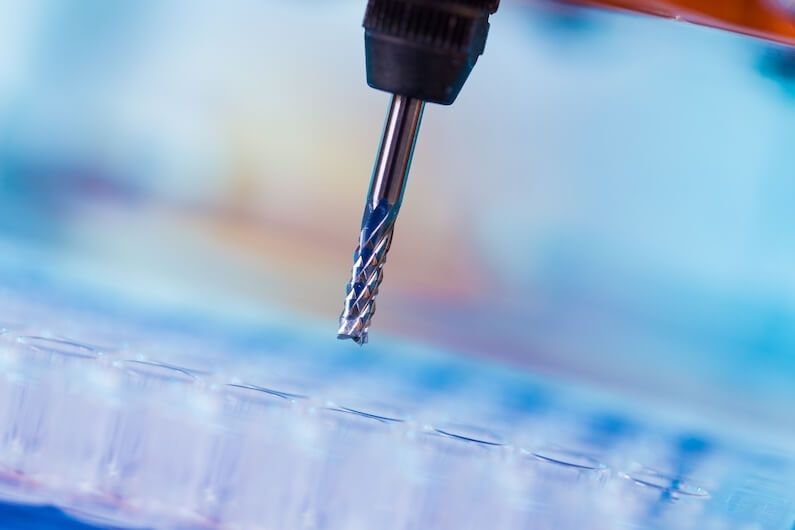
When I started in a CNC shop, plastics felt totally different from metal. The usual ways didn't work. We learned fast that plastics need their own rules. Ignoring these problems leads to frustration and wasted parts. No engineer wants that.
Low Melting Points and Heat Buildup
Plastics melt at much lower temperatures than metals. This matters because cutting makes heat. Too much heat, and the plastic melts onto the cutting tool. We call this "gumming1." The tool won't cut well then. It also ruins the part's surface and can mess up the tool. I recall a job with ABS2. We had lots of gumming at first. We had to change cutting settings3 a lot and keep tools super sharp to manage heat. Getting rid of heat is key.
High Thermal Expansion Rates
Most plastics expand a lot when they get warm. This is another common issue. If you need tight fits, like David often does for his automation parts, this expansion can mess up your sizes. A part might be right when warm from machining. But when it cools, it could shrink too much. We've learned to plan for this. Sometimes we machine in a cool room. Or, we let parts cool then do a final light cut.
Material Softness and Brittleness
Plastics range from soft and gummy to hard and brittle. Softer plastics like LDPE can bend under cutting or clamping pressure. This causes wrong sizes or bad surfaces. They also make long, stringy chips that are messy. Brittle plastics like acrylic can easily chip or crack. This happens with fast cuts or dull tools. I’ve seen parts break on the machine. The feed rate was too high or the tool was wrong. Picking the right cutting plan for the plastic is vital.
Swarf Management
Chip control, or swarf management4, is also different with plastics. Metal chips often break small. Plastic chips, especially from soft plastics, can be long and stringy. They can wrap around the tool or part. This blocks cutting, builds heat, and can damage things. Some plastic swarf is sticky too. Good swarf removal, like vacuums or special coolant, is very important. I always tell my team: watch the chips closely with any new plastic.
What are the 4 Essential Tips for Precision CNC Machining Plastics?
Getting the precision you need with plastics can seem hard. If parts don't meet specs, they won't work right. These four tips will guide your machining for better results.
The four key tips for precise plastic CNC machining are: always use sharp, special tools; carefully set speeds and feeds for that plastic; ensure good cooling; and clamp the workpiece right so it doesn’t bend.
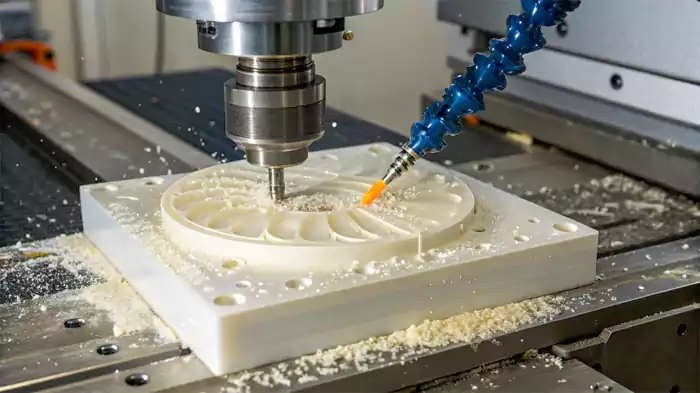
Over the years at Allied Metal, we've machined many kinds of plastics for clients in robotics and automation. Getting those tight tolerances right comes down to some basic rules. These are real steps David and other engineers can make sure their suppliers use.
Tip 1: Tool Selection and Sharpness
This is likely the most important thing. For plastics, you need tools that are extremely sharp. Dull tools make more friction and heat. As we said, heat is bad for plastics. Dull tools also push material instead of cutting it clean. This causes bad surfaces and stress.
It's often best to use tools made just for plastics. These tools usually have:
- Higher rake angles: This helps lift chips away and cuts easier.
- Larger relief angles: This stops rubbing between the tool and surface.
- Polished flutes: Smooth flutes help chips escape and stop sticking.
Common tool materials are High-Speed Steel (HSS) or solid carbide. They are often uncoated or have special low-friction coatings like Diamond-Like Carbon (DLC). I always tell my machinists: if you switch from metal to plastic, use a new tool or one freshly sharpened for plastic.Tip 2: Optimizing Speeds and Feeds
Finding the right mix of cutting speed (tool rotation speed) and feed rate (how fast tool moves into material) is key. There's no one rule. It changes a lot with each plastic type.
- Generally, for many plastics, you can use higher spindle speeds (RPM) than for metals. This helps cut the material cleanly.
- Feed rates, though, often need to be medium. Too fast can cause too much heat, wear tools, or crack brittle plastics. Too slow can lead to rubbing. Rubbing also makes heat and can melt plastic.
We often start with what the maker suggests for a plastic. Then we tweak based on chips, surface look, and any heat signs. Test cuts on scrap are very helpful.Tip 3: Effective Cooling and Lubrication
Managing heat is most important. Some hard plastics can be cut dry with good chip removal. But many do better with cooling.
- Compressed air: An air blast is often best. It cools the tool and part. It also helps clear chips without making the plastic dirty. This is usually my first pick, especially for acrylic. Liquid coolants can sometimes make acrylic crack.
- Liquid coolants/lubricants: If you use them, they must be safe for the plastic. Some plastics soak up liquids or react badly. Water-based oils or special plastic coolants can work. But always check if they are okay for the plastic. They mainly cool, but also help flush chips.
I remember a job with polycarbonate. We had trouble with the surface. Then we used a targeted air blast right at the cutting edge. It made a big difference.Tip 4: Workpiece Clamping Techniques
Plastics are usually softer and bend more than metals. So, how you hold them for machining is very important.
- Avoid over-clamping: Too much clamp pressure can bend the plastic. This makes sizes wrong after you release the clamp. It can also add stress that might cause cracks later.
- Distribute clamping force: Use wider clamps or custom holders that fit the part. This spreads the pressure. Soft jaws or extra material can stop marks on the part surface.
- Support: Make sure the part is well supported. This stops vibration or bending during cutting. This is especially true for thin or flexible parts.
For delicate plastic parts, we often design custom fixtures. It's an early cost that pays off with good quality and less waste. David would like that for his high-accuracy parts.
What are 4 Common CNC Machining Processes Used for Plastics?
Many CNC processes exist, but which are best for plastics? Using the wrong one can harm delicate plastic parts. Or, it might not make the features you want. Knowing these common processes helps you pick the best way.
Four common CNC processes good for plastics are CNC milling for complex shapes, CNC turning for round parts, CNC drilling for precise holes, and CNC routing, often for sheets or softer plastics.
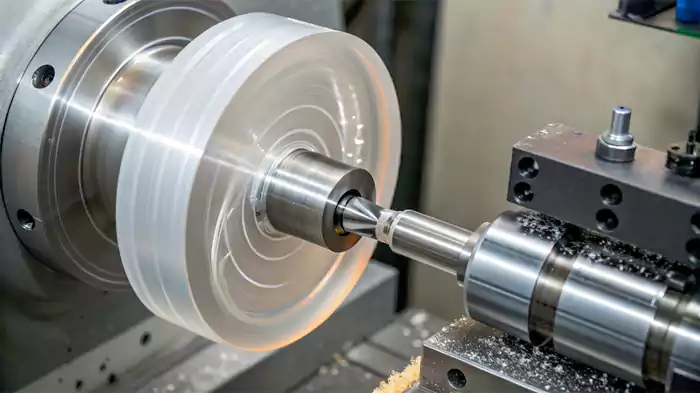
At Allied Metal, we use different CNC machines. Picking the right process for a plastic part is a key choice. Each process works best for certain things with these materials. For example, making a Delrin gear is different from cutting a big acrylic panel.
CNC Milling Plastics
CNC milling is very flexible for plastics. It uses spinning tools with many cutting points to remove material. The workpiece stays still. This process is great for complex shapes, pockets, slots, and 3D surfaces.
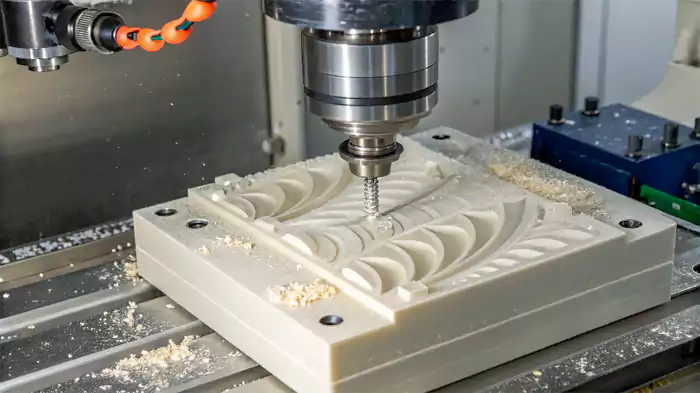
- Tooling: Sharp end mills made for plastic are vital. They often have fewer flutes (like 1 or 2) for softer plastics. This helps chips get out.
- Heat Management: Controlling heat is key. Air blast is common. For materials like polycarbonate, we adjust speeds carefully to stop melting.
- Applications: We often use CNC milling for cases, manifolds, custom brackets, and complex parts for automated systems. For an engineer like David, this process is likely key for many custom parts.
CNC Turning Plastics
CNC turning makes round plastic parts. The part spins while a single-point tool cuts it. This is good for parts like shafts, bushings, rollers, and custom fittings.
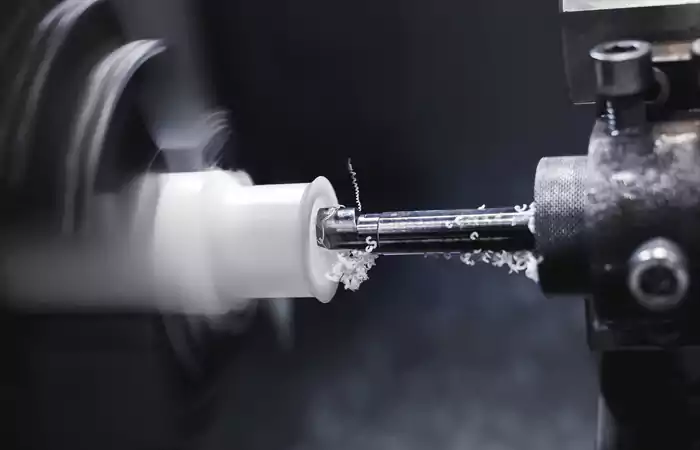
- Tooling: Sharp tools with high positive rake angles work best. Polished inserts help stop material sticking.
- Chip Control: Long, stringy chips can be a problem. So, chip breakers or pecking cycles might be used.
- Surface Finish: Getting a good surface needs care with tool shape, cutting settings, and less vibration. I've seen PEEK parts turned so well they look almost polished right off the machine.
CNC Drilling Plastics
Drilling holes in plastics seems easy. But it needs care to avoid cracks (especially where the drill exits), melting, or grabbing.
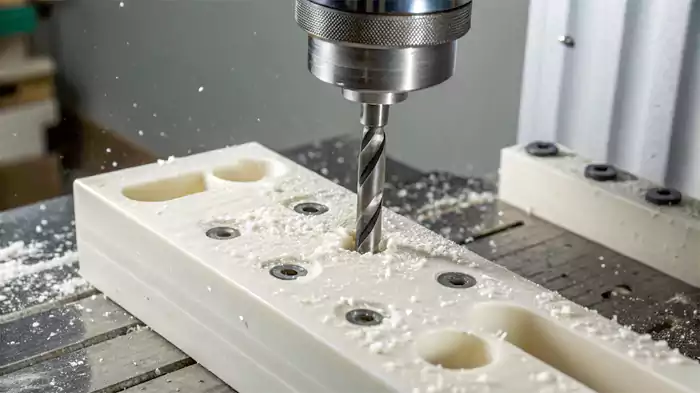
- Drill Bits: Standard twist drills can work. But special plastic drills are better. They often have sharper points (like 60-90 degrees). They have wider flutes for chips, and sometimes a zero rake on the cutting edge. This stops the drill from pulling in too hard. Parabolic flutes are good for deep holes.
- Peck Drilling: Using a peck cycle (drill pulls back often) helps clear chips. It also cuts down heat. This is important in materials like nylon.
- Backing Material: Using a scrap piece behind the part helps stop blowout. It makes a clean exit hole.
CNC Routing Plastics
CNC routing is like milling. But it's often for bigger machines that cut sheet materials. Think acrylic, polycarbonate, PVC, and HDPE. Routers usually spin very fast.

- Applications: Common for signs, display parts, and big panels. It's good for cutting parts from plastic sheets efficiently. Nesting software often helps use material well.
- Hold-Down: Vacuum tables are often used to hold sheets flat and secure. This is vital as sheets can bend.
- Dust Extraction: Routing plastics can make lots of fine dust or shavings. Good dust removal systems are key for safety and machine health.
Here's a quick comparison:
| Process | Best For | Key Consideration for Plastics |
|---|---|---|
| Milling | Complex shapes, pockets, 3D contours | Heat, tool geometry, chip evacuation |
| Turning | Cylindrical parts, threads, round features | Chip control, surface finish, heat |
| Drilling | Holes of various diameters and depths | Cracking, melting at exit, grabbing |
| Routing | Large flat parts, sheet material, nesting | Material hold-down, dust, edge finish |
Picking the right process, tools, and settings lets us deliver the quality parts our clients need.
What are Two Major Concerns When Machining Plastic Materials?
Machining plastics has specific worries you can't ignore. Overlooking them leads to failed parts, wasted material, and project delays. Focus on these two big areas for better results.
Two big concerns when machining plastics are managing heat to stop melting or warping, and handling how plastics bend under cutting or clamping, or crack from stress or wrong tool use.

When I talk to engineers like David about their plastic part needs, these two worries often come up. They show up as concerns about part size, surface quality, and if the part will break. Facing them directly in machining is a must for success.
Concern 1: Heat Management and Thermal Effects
We've talked about this, but it's a top concern. Plastics don't spread heat well, and they melt easily.
- Melting and Gumming: Too much heat from friction or cutting can melt plastic. This molten plastic sticks to the tool (gumming). This makes cutting bad and gives a poor surface. It can even pull material off the part.
- Warping and Dimensional Instability: Even if plastic doesn't fully melt, local heat makes it expand. If it cools unevenly, or if stress is relieved, the part can warp or change size. This is bad for parts needing tight fits. I recall a client with flat Polycarbonate sheet issues. The problem was heat during a fast facing cut.
- Material Degradation: Too much heat can also weaken the plastic or change its color.
Ways to manage heat include sharp tools, right speeds and feeds, coolants (especially air), and short tool contact time.Concern 2: Material Deformation and Stress Cracking
Plastics are not as stiff as metals. How they react to cutting and clamping forces is a big deal.
- Deformation Under Load: Softer plastics can easily bend from tool pressure or clamps. So, the machined feature might not be right after forces are removed. For instance, drilling a hole in flexible plastic might make it undersized. The material pushed away.
- Stress Concentration and Cracking: Many plastics, like acrylic or polycarbonate, can crack from stress. Sharp design corners, stress from making the raw material, or stress from machining can cause this. Dull tools, too much clamping, or wrong coolants are culprits. I’ve seen good acrylic parts crack days later due to hidden stress.
- Brittleness: Some plastics are very brittle (like polystyrene). They don't give much and can chip or break easily. This happens if cutting forces are too high, tools are dull, or there's impact.
Good fixture design helps. Using sharp tools with right shapes to lower cutting forces is key. Sometimes, heating parts after machining (annealing) helps remove stress. Knowing the plastic's properties is vital here.
How Can You Find a Reliable Plastics CNC Machining Service Provider?
Finding the right CNC partner for your plastic parts is very important. A supplier without the right experience can hurt your project’s time, budget, and quality.
To find a good plastics CNC machining provider, check their experience with your specific plastics. Review their past work. Ask about their quality checks. See how well they communicate and how detailed their quotes are.
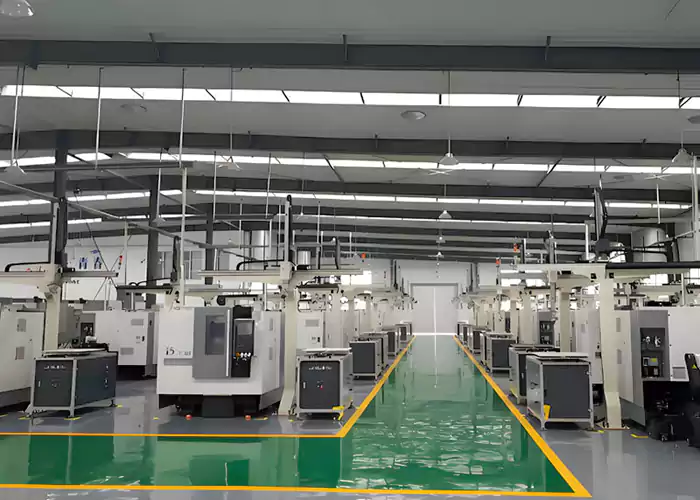
As someone running a CNC service, I know what clients like David look for. It’s not just making a part. It’s a partnership for quality, understanding engineering needs, and good communication. When you look for a supplier for key plastic parts, especially with tight fits or complex shapes, checking them carefully is key. At Allied Metal, we aim to be that kind of partner.
Assessing Experience and Specialization
Not all shops are experts in plastics.
- Ask about specific materials: Don't just ask if they machine "plastics." Ask about their experience with the exact types you use (like PEEK, Delrin, Nylon). Different plastics act very differently.
- Request examples: A good supplier can show examples of similar plastic parts. At Allied Metal, for example, we believe in transparency and are happy to discuss our portfolio with plastics, as we know this builds trust for engineers like David.
- Look for special tooling/processes: Do they mention tools for plastics? Do they talk about heat control or stopping bending? This shows they know plastics.
Evaluating Quoting and Communication
First talks tell you a lot.
- Clarity in Quotes: Is the quote easy to understand and complete? Does it list everything? Do they note your specs, like sizes and materials? A vague quote is a bad sign. David needs clear quotes from his drawings. Good suppliers, like we strive to be at Allied Metal, ensure this.
- Responsiveness and Technical Know-How: How fast do they reply? When you ask tech questions, do they give smart answers? Can they talk about your design like an engineer? Maybe even suggest design changes for better plastic machining?
- Confidentiality: For private designs, make sure they protect your ideas. This is vital for engineers like David.
Checking Quality Control Processes
Quality comes from good processes.
- Inspection Tools: What inspection tools do they have (like CMMs, calipers)? How do they check their tools?
- Quality System: Do they have a system like ISO 9001? This shows they follow set steps for quality. At Allied Metal, our dedication to quality means having strong systems for checking parts, ensuring they meet client needs.
- Traceability: Can they give material certificates? Can they track parts through making? This is often key for industrial uses. Ask how they ensure parts meet your sizes every time.
Inquiring About Material Handling and Tooling
Proper handling of plastic materials and using the right tools are vital.
- Material Storage: Some plastics are sensitive to moisture or temperature. Ask how they store raw materials to keep them good before machining.
- Tooling Strategy: Do they use sharp, quality tools for plastics? Do they manage tools to keep them sharp and avoid using worn tools on your parts?
- Contamination Prevention: If they machine both metals and plastics, how do they stop metal chips from getting into plastic parts? Some shops have separate areas or machines for plastics.
Finding a partner who really gets plastics machining can make your projects much more successful. It's about trust that they can deliver what you need.
Conclusion
Mastering CNC for plastics means careful work. Use the right tools and methods. These tips, and a good machining partner, will help you succeed every time.
-
Understanding gumming is crucial for effective plastic cutting. Explore this link to learn prevention techniques and improve your cutting process. ↩
-
ABS is widely used in various applications. Learn more about its properties to better understand its cutting requirements and benefits. ↩
-
Proper cutting settings can significantly enhance your work with plastics. Discover expert tips to optimize your cutting process. ↩
-
Learning about swarf management techniques can significantly improve your machining efficiency and reduce downtime. ↩
